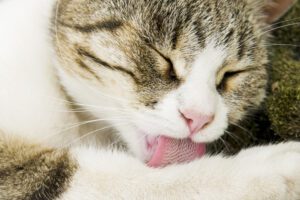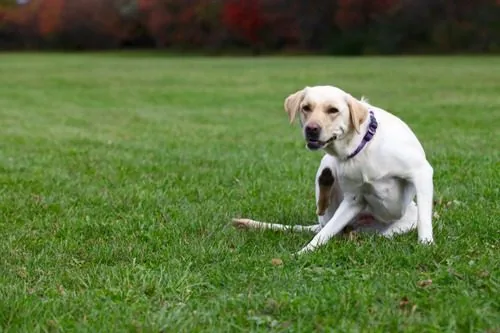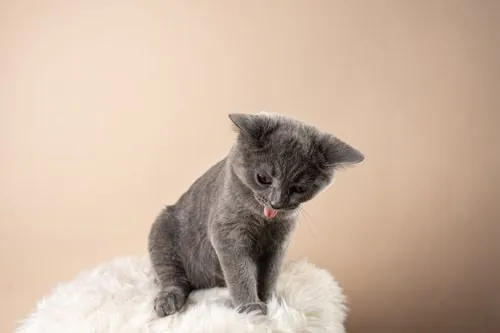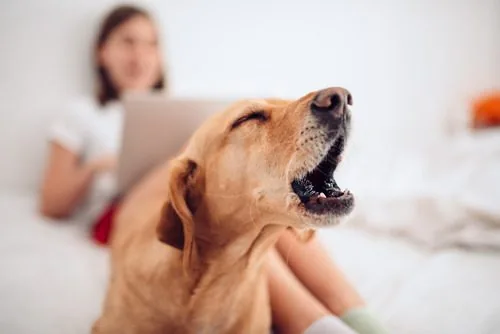“Purrfectly” Rough: Why Cats Have a Rough Tongue
Gentle purring, tickling whiskers, soft fur, and a button nose make cats one of the most adorable animals. Because of these lovable features, being licked by one for the first time may come as a surprise due to their rough tongues. While this physical quirk has rarely been a deal-breaker for people, did you ever wonder why cat’s tongues are so rough like sandpaper?
Cats have rough tongues due to hair-like barbs called papillae. The rough tongue of the cat aids them in grooming, eating and drinking, consuming prey, and socializing.
In this article, we will take a deep dive into the rough tongues of cats, exploring the evolutionary advantages of the feline tongue and how their rough tongues help them survive.

Grooming Benefits
One of the primary roles of a cat’s tongue (specifically, the papillae) is to aid in grooming. Cats are known for their meticulous grooming habits, and we have all witnessed one repeatedly licking itself, sometimes in the same spot for several minutes.
This seemingly manic behavior is likely because grooming is much more than a way for cats to keep clean: the act of grooming itself is necessary for maintaining the health and wellness of our feline friends. Here are just a few examples of the benefits cats experience from their daily grooming.
Detangling Fur
The papillae play an essential role in this process, acting like natural combs to detangle fur and remove loose hairs. The backward-facing orientation of the papillae allows cats to grip their fur efficiently, preventing them from simply pushing the hair around.
Removing Debris
The tiny hooks on a cat’s tongue are also adept at removing dirt, grease, debris, and potential parasites from their fur. As a cat licks itself, these papillae work to lift and extract foreign particles, keeping the fur clean and healthy. Healthy grooming habits are especially important for outdoor cats, who have a higher chance of coming into contact with various contaminants in their environment.
Spreading Natural Oils
Cats have sebaceous glands in their skin that produce oils to keep it from becoming dry and to maintain a healthy coat. The papillae on their tongues help distribute these oils evenly across their fur, providing a natural barrier against moisture and environmental elements. This oil distribution process not only keeps the coat shiny and smooth but also aids in temperature regulation and waterproofing.
Cooling
Cats do not have sweat glands as we do, so they rely on other methods to regulate their body temperature in the heat. Licking their fur allows them to spread saliva across the surface, which then evaporates and creates a cooling effect (similar to human sweat). The rough texture of their tongue helps maximize the surface area for saliva distribution, enhancing this cooling mechanism.
Feeding Habits
Yet another function of the cat’s rough tongue is to help with feeding. When a cat is eating, the barbs act like a sieve, trapping the smaller pieces of food and separating them from debris or waste. This filtering method allows the cat to consume only the nutritious parts of the food.
In addition, the structure of a cat’s tongue is also incredibly flexible, allowing them to curl it and manipulate food in their mouths with surprising precision. This malleability is due to numerous muscles in the tongue, including the intrinsic muscles (responsible for fine movements) and the extrinsic muscles, which control the overall position and movement of the tongue.
Without this ability, cats would struggle to eat smaller pieces of food, making it difficult for them to obtain the necessary nutrients for survival.
In addition to eating habits, a cat’s rough tongue is also well-suited for collecting water. When a cat drinks, it uses the tongue’s rough surface to create a column of water, which the cat then laps quickly up. This efficient method of hydration allows cats to minimize water waste and maintain proper fluid balance in their bodies.
Evolutionary Advantages
Cats’ rough tongues serve several evolutionary advantages that have contributed to their success as a species for thousands of years. Here are a couple of these advantages modern cats of all species experience thanks to nature’s slow but handy work through the process of evolution:
Prey Consumption
The rough texture of a cat’s tongue serves a vital function in its predatory behaviors. The papillae assist in removing meat from the bones of their prey, allowing them to consume more of their catch and maximize energy intake after expelling excess energy to catch the prey in the first place.
Conserving energy is particularly important for wild felines that require every possible nutrient in order to thrive in an environment that can be unforgiving.
Social Bonding
Grooming serves as a crucial social bonding mechanism for cats in addition to its health benefits. Cats within the same social groups often groom each other, a behavior known as allogrooming, which helps strengthen bonds and maintain group cohesion.
Conclusion
In summary, cats’ rough tongues are a marvel of nature’s design. From their grooming habits to feeding and hydration, a cat’s tongue plays multitudes of crucial roles that have aided in their survival for many millennia.
For pet parents in the Atlanta, GA region, The Village Vets has 7 practices conveniently located across the Atlanta metro area. Find a location near you today!
Recent Posts
About The Village Vets
The Village Vets is a network of animal hospitals based in Atlanta, GA and the surrounding area. We offer honest, excellent service to our clients in a comfortable, friendly atmosphere. To learn more about our locations and how we can better serve you and your pet, click the button below.
Share This Post
Recent Posts
About The Village Vets
The Village Vets is a network of animal hospitals based in Atlanta, GA and the surrounding area. We offer honest, excellent service to our clients in a comfortable, friendly atmosphere. To learn more about our locations and how we can better serve you and your pet, click the button below.



